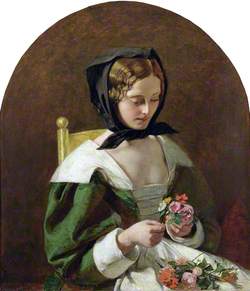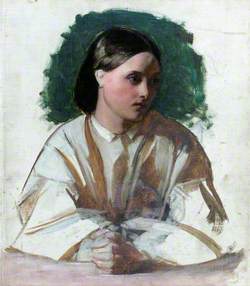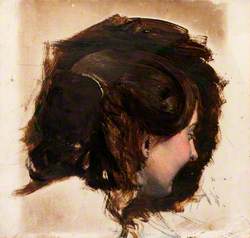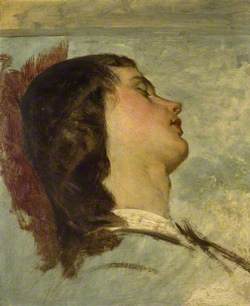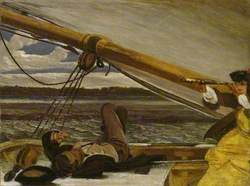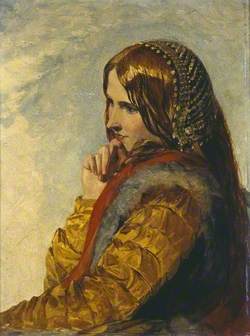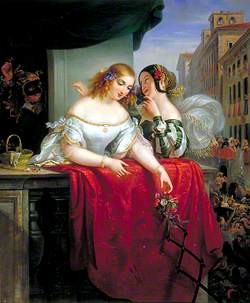How you can use this image
This image is available to be shared and re-used under the terms of the Creative Commons Attribution-NonCommercial-NoDerivatives licence (CC BY-NC-ND).
You can reproduce this image for non-commercial purposes and you are not able to change or modify it in any way.
Wherever you reproduce the image you must attribute the original creators (acknowledge the original artist(s) and the person/organisation that took the photograph of the work) and any other rights holders.
Review our guidance pages which explain how you can reuse images, how to credit an image and how to find more images in the public domain or with a Creative Commons licence available.
DownloadNotes
Add or edit a note on this artwork that only you can see. You can find notes again by going to the ‘Notes’ section of your account.
This is the second of a set of three modern-life pictures on the theme of the fallen woman. The other two (N03278 and N03280) are also in the Tate collection. They are typical of the social moralist pictures that were popular in Victorian art. The theme of the triptych is the discovery of the woman's infidelity and its consequences. In the first scene the family are still together, and the husband has just learned of his wife's adultery. The second scene is a dimly-lit garret, five years later. The room is sparsely furnished and the few decorations include two portraits of the absent mother and father. The father has recently died and the mother has been driven out of her home, a fallen woman. The two orphaned girls comfort each other, the elder gazing sadly over the rooftops towards the moon.
The pictures were exhibited with no title, but with this subtitle, 'August the 4th – Have just heard that B – has been dead more than a fortnight, so his poor children have now lost both parents. I hear she was seen on Friday last near the Strand, evidently without a place to lay her head. What a fall hers has been!' In Victorian England a man could safely take a mistress without fear of recrimination, but for a woman to be unfaithful was an unforgivable crime. As Caroline Norton, an early feminist, wrote, 'the faults of women are visited as sins, the sins of men are not even visited as faults' (quoted in Lambourne, p.374).
Further reading: Lionel Lambourne, 'Victorian Painting', London 1999, pp.374–375, reproduced p.376, in colour. Christopher Wood, 'Victorian Painting', London 1999, pp.52–53, reproduced p.53, in colour. Frances Fowle 1 December 2000
Title
Past and Present, No. 2
Date
1858
Medium
Oil on canvas
Measurements
H 63.5 x W 76.2 cm
Accession number
N03279
Acquisition method
Presented by Sir Alec and Lady Martin in memory of their daughter Nora 1918
Work type
Painting
Inscription description
date inscribed


